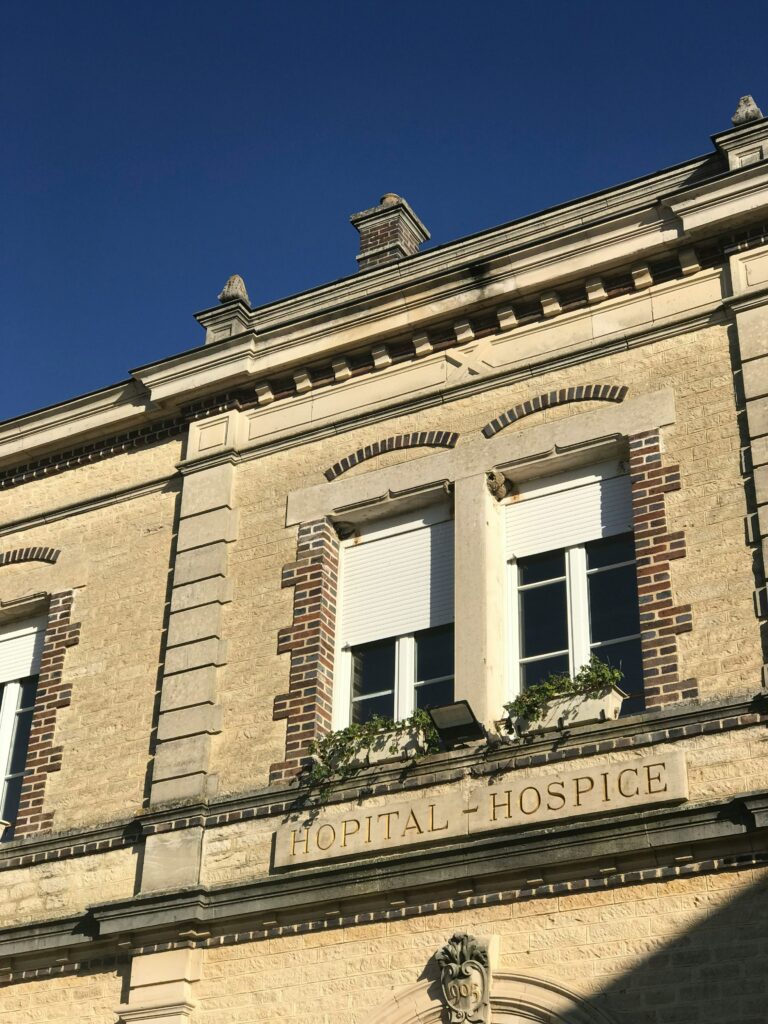While I fully expect to be at the “butt end” of many comments for this column, I feel compelled to address this topic at the request of several patients. It seems that many geriatric physical therapists commonly encounter patients that suffer from constipation which limits their participation in rehabilitation. Ironically, research demonstrates that exercise and activity actually help relieve constipation.
The National Digestive Diseases Information Clearinghouse (NDDIC) reports that 3.1 million people in the United States suffer from constipation. The NDDIC further reports that this problem leads to almost 400,000 hospitalizations, 1.4 million visits to emergency rooms, 1 million prescriptions and 121 deaths each year. Constipation is defined by the Ohio University College of Osteopathic Medicine as three or less bowel movements per week. It is also estimated that more than 27 percent of the elderly are affected.
Severe constipation can result in immediate medical attention in some cases due to intestinal obstruction. In addition to infrequent bowel movements, some symptoms include: feeling poorly, weight loss, loss of appetite, abdominal distention and/or pain, and vomiting.
Healthy people must continue to keep active. Get into good exercise habits at a young age and continue through life. Maintaining a consistent schedule of eating and exercise is also helpful. Some simple suggestions for beginning an exercise program for prevention of constipation in the healthy population are:
Depending on your general health and ambulatory status, these endurance exercises may be appropriate for you. Therefore, consider one or two of the following as a good starting point:
IN CONCLUSION: KEEP MOVING YOUR BODY AND YOU WILL KEEP MOVING YOUR BOWELS!
Visit your doctor regularly and listen to your body.
Keep moving, eat healthy foods, exercise regularly, and live long and well!
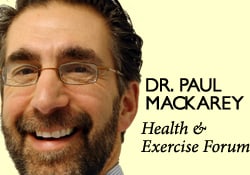
EVERY MONDAY – Read Dr. Paul J. Mackarey “Health & Exercise Forum!” via Blog
EVERY SUNDAY in "The Sunday Times" - Read Dr. Paul J. Mackarey “Health & Exercise Forum!” in hard copy
This article is not intended as a substitute for medical treatment. If you have questions related to your medical condition, please contact your family physician. For further inquires related to this topic email: drpmackarey@msn.com
Paul J. Mackarey PT, DHSc, OCS is a Doctor in Health Sciences specializing in orthopedic and sports physical therapy in Scranton and Clarks Summit. Dr. Mackarey is in private practice and is an associate professor of clinical medicine at Geisinger Commonwealth School of Medicine. For all of Dr. Mackarey's articles, visit our exercise forum!

According to the United States Environmental Protection Agency, NEPA and all of Pennsylvania is experiencing a change in climate as indicated by a half a degree (F) in temperature, more frequent and heavy rainstorms and the tidal portion of the Delaware River is rising one inch every eight years. Last summer was one of our hottest on record and this summer has produced several heat waves with more expected. For those without air conditioning or access to a lake or pool, it will also be remembered as record setting warm temperatures. A local reader who cares for her elderly mother wrote to express her concern about dehydration in the elderly. Age, diet, illness and medications are some of the many reasons why elders suffer from dehydration not only in the summer heat, but year-round.
Next to oxygen, water is the nutrient most needed for life. A person can live without food for a month, but most can survive only three to four days without water. Even though proper hydration is essential for health, water gets overlooked as one of the six basic nutrients. Dehydration occurs when the amount of water taken into the body is less than the amount that is being lost. Dehydration can happen very rapidly (i.e. in less than eight hours); the consequences can be life threatening and the symptoms can be alarmingly swift.
In the body, water is needed to regulate body temperature, carry nutrients, remove toxins and waste materials, and provide the medium in which all cellular chemical reactions take place. Fluid balance is vital for body functions. A significant decrease in the total amount of body fluids leads to dehydration. Fluids can be lost through the urine, skin, or lungs. Along with fluids, essential electrolytes, such as sodium and potassium, are also perilously depleted in a dehydrated individual.
Dehydration is the most common fluid and electrolyte disorder of frail elders, both in long term care facilities and in the community! Elders aged 85 to 99 years are six times more likely to be hospitalized for dehydration than those aged 65 to 69 years. More than 18% of those hospitalized for dehydration will die within 30 days, and associated mortality increases with age. Men appear to dehydrate more often than women and dehydration is often masked by other conditions.
Elderly individuals are at heightened risk for dehydration for several reasons. Compared to younger individuals, their regulatory system (i.e. kidneys and hormones) does not work as well and their bodies have lower water contents. Older adults often have a depressed thirst drive due to a decrease in a particular hormone. They do not feel thirsty when they are dehydrated. This is especially true in hot, humid weather, when they have a fever, are taking medications, or have vomiting or diarrhea. They have decreased taste, smell, and appetite which contribute to the muted perception of thirst. Because of dementia, depression, visual deficits, or motor impairments, elderly people may have difficulty getting fluids for themselves. Many elderly individuals limit their fluid intake in the belief that they will prevent incontinence and decrease the number of trips to the bathroom. The medications that they are taking (e.g. diuretics, laxatives, hypnotics) contribute to dehydration.
Elders may suffer headaches, fainting, disorientation, nausea, seizure, a stroke, or a heart attack as a result of dehydration. The minimum daily requirement to avoid dehydration is between 1,500 (6.34 cups) and 2,000 ml of fluid intake per day. Six to eight good-sized glasses of water a day should provide this amount. Better hydration improves well-being and medications work more effectively when an individual is properly hydrated.
Those who care for the elderly whether at home or in a health care facility need to be alert to the following symptoms:
By the way, plain old tap water is a good way to replenish fluid loss. Keep in mind that some energy drinks not only have excess and unneeded calories but also contain sugar that slows down the rate at which water can be absorbed from the stomach. Consuming alcoholic and caffeinated beverages actually have an opposite, diuretic effect!

EVERY MONDAY – Read Dr. Paul J. Mackarey “Health & Exercise Forum!” via Blog
EVERY SUNDAY in "The Sunday Times" - Read Dr. Paul J. Mackarey “Health & Exercise Forum!” in hard copy
This article is not intended as a substitute for medical treatment. If you have questions related to your medical condition, please contact your family physician. For further inquires related to this topic email: drpmackarey@msn.com
Paul J. Mackarey PT, DHSc, OCS is a Doctor in Health Sciences specializing in orthopedic and sports physical therapy in Scranton and Clarks Summit. Dr. Mackarey is in private practice and is an associate professor of clinical medicine at Geisinger Commonwealth School of Medicine. For all of Dr. Mackarey's articles, visit our exercise forum!
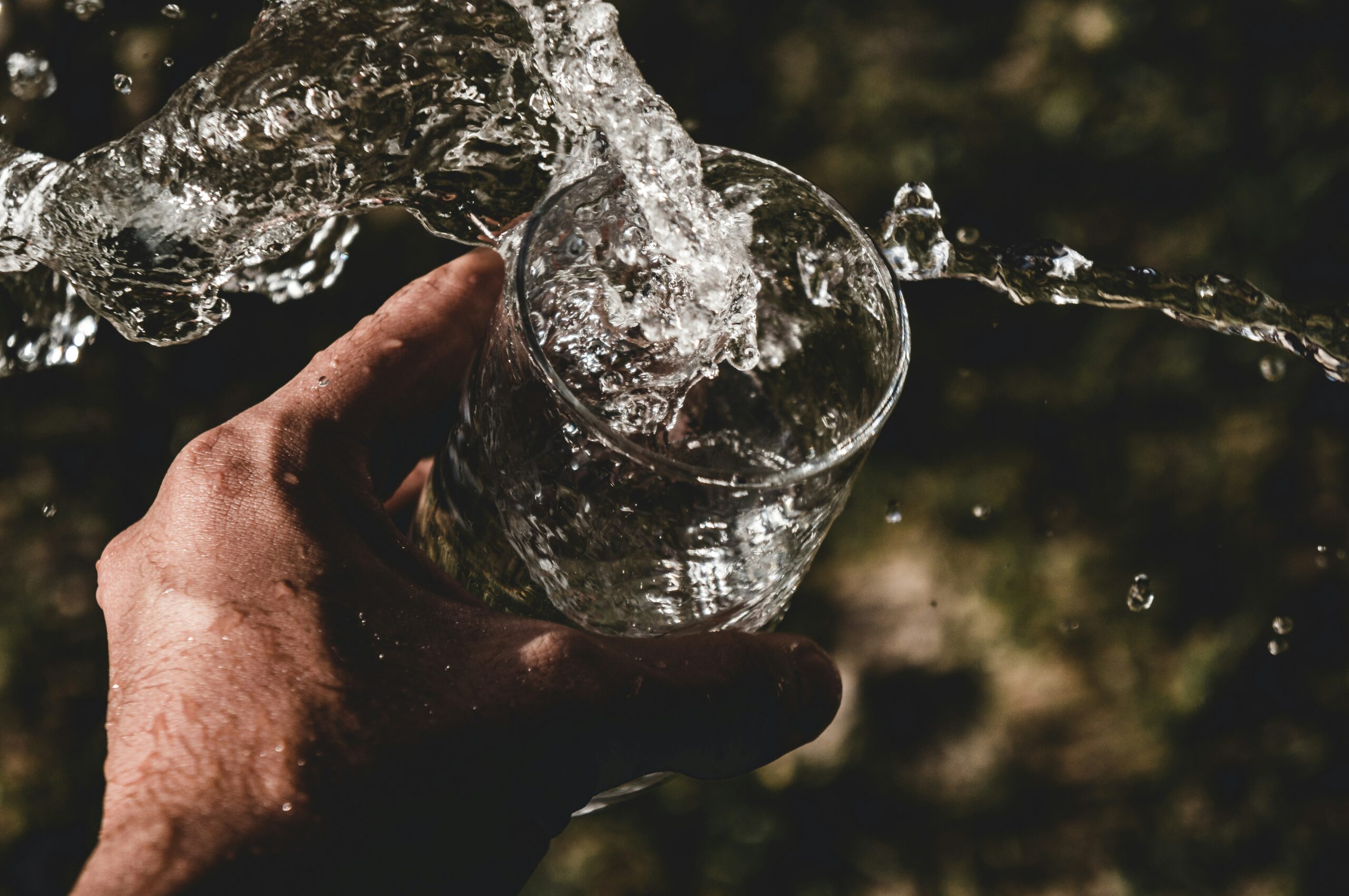
Despite recent challenges for air travel due to increased volume, severe weather and a nationwide shortage of air traffic controllers, Americans report high levels of enthusiasm for air travel this summer, including travel abroad.
Confession; I recently was on a long trip that required sitting on an airplane for more than six hours…and I wore compression stockings … guess I’m getting older (and wiser)!
Have you noticed that being in a car or on an airplane for more than three hours leads to neck and back pain? Soreness, stiffness and swelling in your legs? With a little planning, preventing or limiting these problems on long trips is possible. Also, as people age and/or develop other health problems, they are more vulnerable to developing a more serious problem associated with long trips; deep vein thrombosis (DVT) or blood clots. But problems with long-distance travel can be avoided. The following tips, based on research and personal experience, can prevent neck, back and leg pain and stiffness and DVT.
A DVT is a blood clot that forms in a deep vein. The deep veins pass through the muscles and cannot be seen like the veins just under your skin. While it may occur in your arms, it is much more common in the legs, especially the calf muscle when traveling. When a blood clot forms in a leg vein it usually sticks to the vein wall. Often, pain and swelling lead you to the doctor and treatment is rendered before serious complications develop. However, there are two possible complications. One, a pulmonary embolus, occurs when a part of the clot logged in your deep vein of the calf breaks off and gets lodged in the lung. This is a very serious problem that can be fatal. Two, post-thrombotic syndrome, occurs when you have pain and swelling in your calf after a DVT.
The following risk factors for DVT significantly increase the potential for problems when traveling on long trips by air, more than 5 hours. Trains, cars and buses also create a risk, but air travel creates a greater risk for the following reasons: reduced cabin pressure, reduced cabin oxygen levels, dehydration and alcoholic drinks, which may increase dehydration and immobility.
Airplane seats are “C” shaped and force you to round your neck and back forwards. These exercises are designed to stretch and extend your back in the opposite direction. Please perform slowly, hold for 3-5 seconds and repeat 10 times each hour.
Sitting:
When sitting in an airplane seat, take the neck pillow in the overhead compartment and place it in the small of your lower back. While sitting or standing up, perform postural exercises every 30-45 minutes.
Visit your doctor regularly and listen to your body.

EVERY MONDAY – Read Dr. Paul J. Mackarey “Health & Exercise Forum!” via Blog
EVERY SUNDAY in "The Sunday Times" - Read Dr. Paul J. Mackarey “Health & Exercise Forum!” in hard copy
This article is not intended as a substitute for medical treatment. If you have questions related to your medical condition, please contact your family physician. For further inquires related to this topic email: drpmackarey@msn.com
Paul J. Mackarey PT, DHSc, OCS is a Doctor in Health Sciences specializing in orthopedic and sports physical therapy in Scranton and Clarks Summit. Dr. Mackarey is in private practice and is an associate professor of clinical medicine at Geisinger Commonwealth School of Medicine. For all of Dr. Mackarey's articles, visit our exercise forum!

I wish I could tell you that after turning 50, there are health issues associated with age I plan to be mindful of and address proactively. Unfortunately, that ship has sailed for me well more than a decade ago. So, I share this medical information, not only as a health professional but also as an experienced senior.
Entering the fifth decade is not all dome and gloom. Often, this decade is associated with an established family, gratifying career, good health and acquired self-confidence…realizing that life does not have to be perfect to be wonderful!
However, research tells us that as the body ages, even small changes at the cellular level can be manifested into big changes and problems over time. Nine of ten older adults have some type of chronic disease and eight of ten have more than one. But the good news is that, with a modicum of effort, most of these illnesses can be controlled or prevented, including regular doctor visits, health screening and testing, and lifestyle changes.
While it is normal to experience some weight gain is expected with age. However, uncontrolled, the average person will gain 1-2 pounds per year, leading to 11 pounds per decade, according to the National Institutes of Health. Consequently, almost 45% of Americans between 40 to 60 are obese. Obesity is associated with at least 20 chronic illnesses such as high blood pressure, heart disease, diabetes, cancer, and arthritis.
SCREEN: Body Mass Index (BMI)
TREATMENT: Diet, Exercise, Lifestyle, Medications, Surgery
With age, the flexibility of blood vessels loses elasticity and, unchecked, two out of three adults over 60 have high blood pressure. While genetics is a factor, there are a few things that you can control such as diet (salt, calories), exercise, weight, stress, and smoking.
SCREEN: Blood Pressure Test, Lab Tests, Electrocardiogram (ECG/EKG)
TREATMENT: Diet, Exercise, Lifestyle, Medications
Plaque buildup in the arteries of the heart begins in childhood and advances rapidly with age. 6-7 percent of US adults between the ages of 40 and 60. 20% of men and almost 10% of women between the ages of 60 and 80 have heart disease.
SCREEN: Blood Pressure, Cholesterol testing, Blood Sugar Testing, Imaging (ECG/MRI)
TREATMENT: Diet, Exercise, Lifestyle, Medications, Surgery
10 % of Americans have diabetes and the percent only increases with age. Diabetes is associated with many serious chronic illnesses such as heart disease, blindness, kidney disease and others.
SCREEN: Blood Test for blood sugar levels such as A1C, fasting plasma glucose test and random plasma glucose test
TREATMENT: Diet, Exercise, Lifestyle, Medications
In many cases osteoarthritis (wear and tear of joints) is often associated with age. However, lifestyle, joint injuries, inactivity, obesity and diabetes play a significant role.
SCREEN: Physical Exam, Functional Scores, Xrays, MRI, CT, US
TREATMENT: Diet, Exercise, Physical Therapy, Lifestyle, Medications (NSAID’s, Steroids, Viscosupplementation), Bracing, Surgery
Loss of bone density and strength is associated with age and certain metabolic conditions such as early menopause, thyroid disease, prolonged use of blood thinners and steroids. However, a diet rich in vitamin D, regular weight bearing exercises such as walking, jogging, dancing etc can go a long way.
SCREEN: Fracture Risk Assessment Tool (FRAX), Dual-Energy X-Ray Absorptiometry (DEXA) TREATMENT: Diet, Exercise, Physical Therapy, Lifestyle, Medications (Oral and Injection)
Losing balance with age is a common problem due to changes in the vestibular system (balance system in the brain), loss of muscle strength and joint flexibility, and compromised vision and hearing. This can often lead to falls, head injuries and fractures.
SCREEN: Timed Up and Go (TUG) Test, Morse Fall Scale
TREATMENT: Physical Therapy – Falls Prevention Program/Balance Training , Diet, Exercise, Lifestyle, Environmental Modification, Vision/Hearing Testing
Almost 10% of adults between the ages of 55 and 65 have some form of vision and/or hearing loss. This can lead to many problems such as balance and falls as well as isolation and depression.
SCREEN: Regular Hearing Tests/Vision Testing
TREATMENT: Corrective Devices
Both men and women suffer from bladder problems with age... especially frequency and control. It can impact lifestyles in many ways. Often adults fail to hydrate properly, especially when traveling, to control urgency. This can lead to other health problems.
SCREEN: Urine Analysis, PSA, Imaging, CT Urogram, Urine Cystoscopy, Ultrasound,
TREATMENT: Diet, Exercise, Lifestyle, Avoid Caffeine and heavy lifting, Medications, Surgery
As the body ages, so too do the cells that make it up. Often these cells change into cancer different parts of the body. Skin, colon, breast, prostate, lung, throat, etc. Today, however, much progress has been made for early detection and treatment.
SCREEN: Physical Exam (Skin Exams), Lab Tests (blood work, PSA), Imaging (CT, Mammography, MRI), Genetic Testing, Pap Smears, HPV Tests, Colonoscopies/Stool Tests, Multi-Cancer Early Detection (MCED)
TREATMENT: Diet, Exercise, Physical Therapy, Lifestyle, Medications, Chemotherapy, Radiation, Immunotherapy and Targeted Therapy Surgery specific to the cancer type.
Age related mental health issues are vastly unreported and diagnosed. Medical problems can contribute to mental health such as high blood sugar levels and some infections. Overall, lifestyle, environmental factors and family structure and support are particularly important.
SCREEN: No Single Test – Combination of Tools including - Neurological and Cognitive Tests, Brain Scans (CT/MRI), Blood tests, Genetic Testing
TREATMENT: Diet, Exercise, Physical Therapy, Lifestyle, (avoid excessive toxins like alcohol and nicotine), Medications, Environmental Modifications.
SOURCES: WebMD, NIH, Mayo Clinic, Alzheimer’s Association, American Cancer Society, American Heart Association, American Diabetes Association

EVERY MONDAY – Read Dr. Paul J. Mackarey “Health & Exercise Forum!” via Blog
EVERY SUNDAY in "The Sunday Times" - Read Dr. Paul J. Mackarey “Health & Exercise Forum!” in hard copy
This article is not intended as a substitute for medical treatment. If you have questions related to your medical condition, please contact your family physician. For further inquires related to this topic email: drpmackarey@msn.com
Paul J. Mackarey PT, DHSc, OCS is a Doctor in Health Sciences specializing in orthopedic and sports physical therapy in Scranton and Clarks Summit. Dr. Mackarey is in private practice and is an associate professor of clinical medicine at Geisinger Commonwealth School of Medicine. For all of Dr. Mackarey's articles, visit our exercise forum!
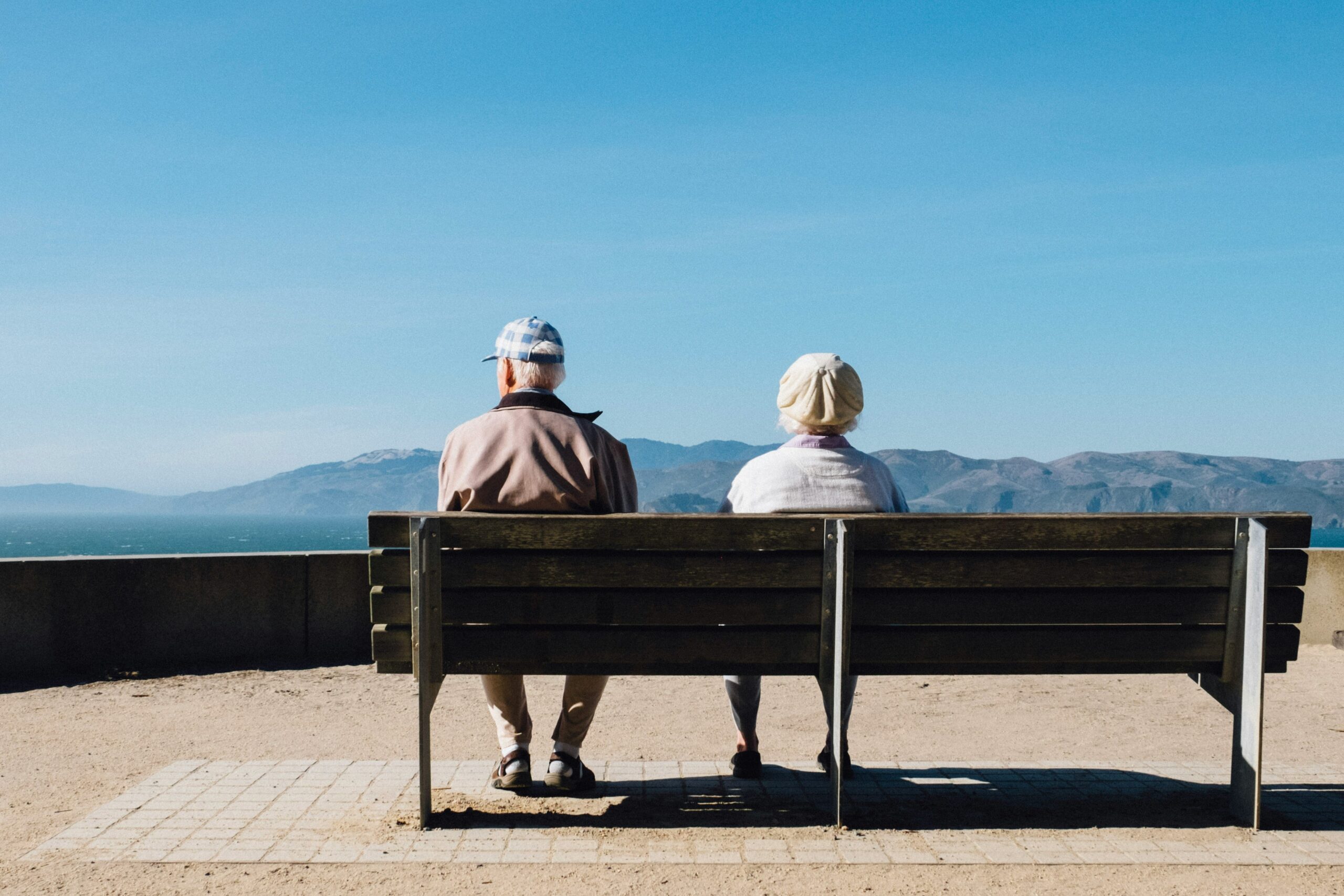
Recently, a reader shared with me their concern about the aging process. They were not happy with the changes in their body, despite exercising regularly. New research suggests that there may be some forms of exercise that are better than others to counteract the aging process. With the accumulation of more and more birthdays, I too, am concerned about the changes in my body!
The deterioration and degeneration of the body associated with the aging process is well-documented and the musculoskeletal system is no exception. As we age, weight bearing joints of the lower body (hips and knees) frequently suffer from wear and tear degeneration. Loss of muscle mass and strength is also common with age. Specifically, damage to older muscles has been found to regenerate slowly and incompletely and the problem runs as deep as the cellular level as the mitochondria diminish in quality and quantity. However, there is good news: a recent study published this spring in Cell Metabolism suggests that certain types of exercise can actually regenerate and reverse the aging mitochondria.
As popular and common as exercise is, little is known about the influence and impact it has on the cellular level. A research team at the Mayo Clinic decided to answer this question and conducted an experiment to determine the cellular effects of different types of exercise on aging muscles.
The Mayo team chose 72 men and women and separated them into two groups: 30 and under and older than 64. All subjects were healthy but sedentary. Pretest analysis was performed for blood sugar levels, gene activity, muscle cell mitochondrial health, and aerobic fitness level. Subjects from the 30 and under group and the over 64 group were randomly assigned to one of four research groups.
Group One: Vigorous weight training 3-5 times per week, Group Two: Interval aerobic exercise on a stationary bike (pedaling hard and fast for four minutes followed by a recovery at a slow pace for three minutes then repeating the sequence 3 or more times) 3 times per week, Group Three: Moderate aerobic exercise on a stationary bike for 30 minutes 2-3 days per week and light weight lifting on the other 2-3 days, Group Four: Control group who did not exercise. After 12 weeks, lab tests were repeated and data compiled and analyzed.
In the 30 and under group as well as the over 64 group, all three experimental groups improved in fitness level and blood sugar regulation. As expected, Group One, the vigorous weight training group, showed the greatest gains in muscle mass and strength. Also, not surprisingly, Group Two, the interval training group, had the greatest gains in endurance. However, the most unexpected results came when retesting the muscle cells by biopsy. Only group two, the interval aerobic exercise group demonstrated the most significant improvement in the activity levels of their genes in both the young and older groups, when compared to the vigorous weight training and moderate exercise groups.
Moreover, the positive improvements in the genes of the older group far surpassed that found in the younger group. For example, in the younger group, 274 genes improved compared to 170 genes in the moderate exercise group and 74 in the vigorous weight training. In the older group, 400 genes were improved in the interval aerobic group while 33 for weight training and 19 for moderate exercise groups.
It is well known that loss of muscle mass and strength is common with age. Specifically, older muscles have been found to regenerate slowly and incompletely, and the problem runs as deep as the cellular level as the mitochondria diminishes in quality and quantity. However, this study suggests that interval aerobic exercise can regenerate and reverse the aging mitochondria. Healthier mitochondria can produce energy for muscle cells to function at a higher level.
Interval aerobic exercise can have anti-aging effects. In fact, the older your muscles, the more you will benefit from, not just moderate exercise, but more vigorous interval aerobic exercise. Furthermore, interval training may be applied, not only to aerobic exercise, but to weight training for the upper and lower body. According to the American College of Sports Medicine, high intensity interval training, also called HIIT workouts, involves a repetition of a series of high-intensity exercise (aerobic or weight training) for a specific period of time (3-5 minutes) followed by a specific period of rest or low-intensity exercise (1-3 minutes).
The intensity can be increased by speed or resistance. HIIT workouts have been associated with increased caloric expenditure with less exercise time, as well as improved strength and endurance. Most recently, it has been found to improve cell energy in the aging population. However, do not attempt to increase the intensity of your exercise program without consulting with your physician first. Once medially approved, consult with a Doctor of Physical Therapy to create a program specifically designed for you.
Therefore, if your gene pool is questionable like most of us, don’t use that as an excuse. There are things you can do to have a positive impact on your DNA to live longer and healthier…one of them is EXERCISE!
Visit your doctor regularly and listen to your body. Keep moving, eat healthy foods, exercise regularly, and live long and well!

EVERY MONDAY – Read Dr. Paul J. Mackarey “Health & Exercise Forum!” via Blog
EVERY SUNDAY in "The Sunday Times" - Read Dr. Paul J. Mackarey “Health & Exercise Forum!” in hard copy
This article is not intended as a substitute for medical treatment. If you have questions related to your medical condition, please contact your family physician. For further inquires related to this topic email: drpmackarey@msn.com
Paul J. Mackarey PT, DHSc, OCS is a Doctor in Health Sciences specializing in orthopedic and sports physical therapy in Scranton and Clarks Summit. Dr. Mackarey is in private practice and is an associate professor of clinical medicine at Geisinger Commonwealth School of Medicine. For all of Dr. Mackarey's articles, visit our exercise forum!
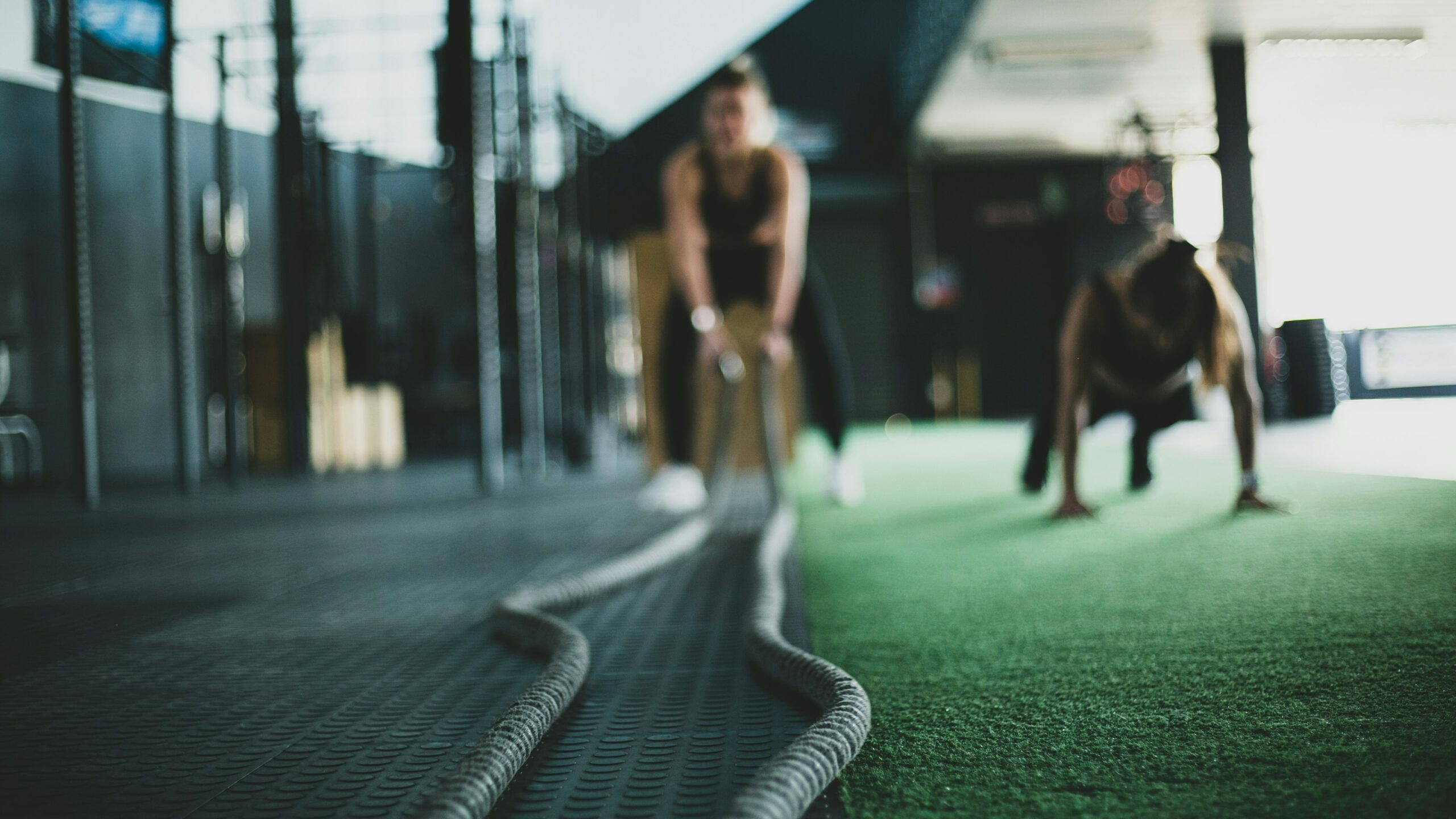
NEPA has experienced more than its share of bitter cold temperatures this winter. And, as much as I enjoy skiing, ice skating and snowshoeing, I have noticed a few achy joints when the mercury plummets! Osteoarthritis, the most common type of arthritis, is often considered to be a normal part of aging. Usually by the age of forty our joints, especially those which are weight bearing (lower spine, hips, knees, ankles, feet) begin to show signs of wear and tear. The cartilage begins to thin, the joint surfaces are not as smooth, and fluid which lubricates the joint becomes diluted, dehydrated and less protective.
Consequently, these aging joints become stiff, sore, weak, and sometimes swollen. Most people with osteoarthritis report additional pain and stiffness in the winter and early spring due to cold, damp weather and NEPA has plenty of it! The cold, for example, restricts the flow of blood to the joints, leading to more pain and stiffness. While moving to a warmer and less humid climate is one solution, it is not practical for most. But all is not lost because there are other alternatives to protect and keep your joints healthier this winter and early spring.
SOURCES: www.apta.org; www.webmd.com

EVERY MONDAY – Read Dr. Paul J. Mackarey “Health & Exercise Forum!” via Blog
EVERY SUNDAY in "The Sunday Times" - Read Dr. Paul J. Mackarey “Health & Exercise Forum!” in hard copy
This article is not intended as a substitute for medical treatment. If you have questions related to your medical condition, please contact your family physician. For further inquires related to this topic email: drpmackarey@msn.com
Paul J. Mackarey PT, DHSc, OCS is a Doctor in Health Sciences specializing in orthopedic and sports physical therapy in Scranton and Clarks Summit. Dr. Mackarey is in private practice and is an associate professor of clinical medicine at Geisinger Commonwealth School of Medicine. For all of Dr. Mackarey's articles, visit our exercise forum!
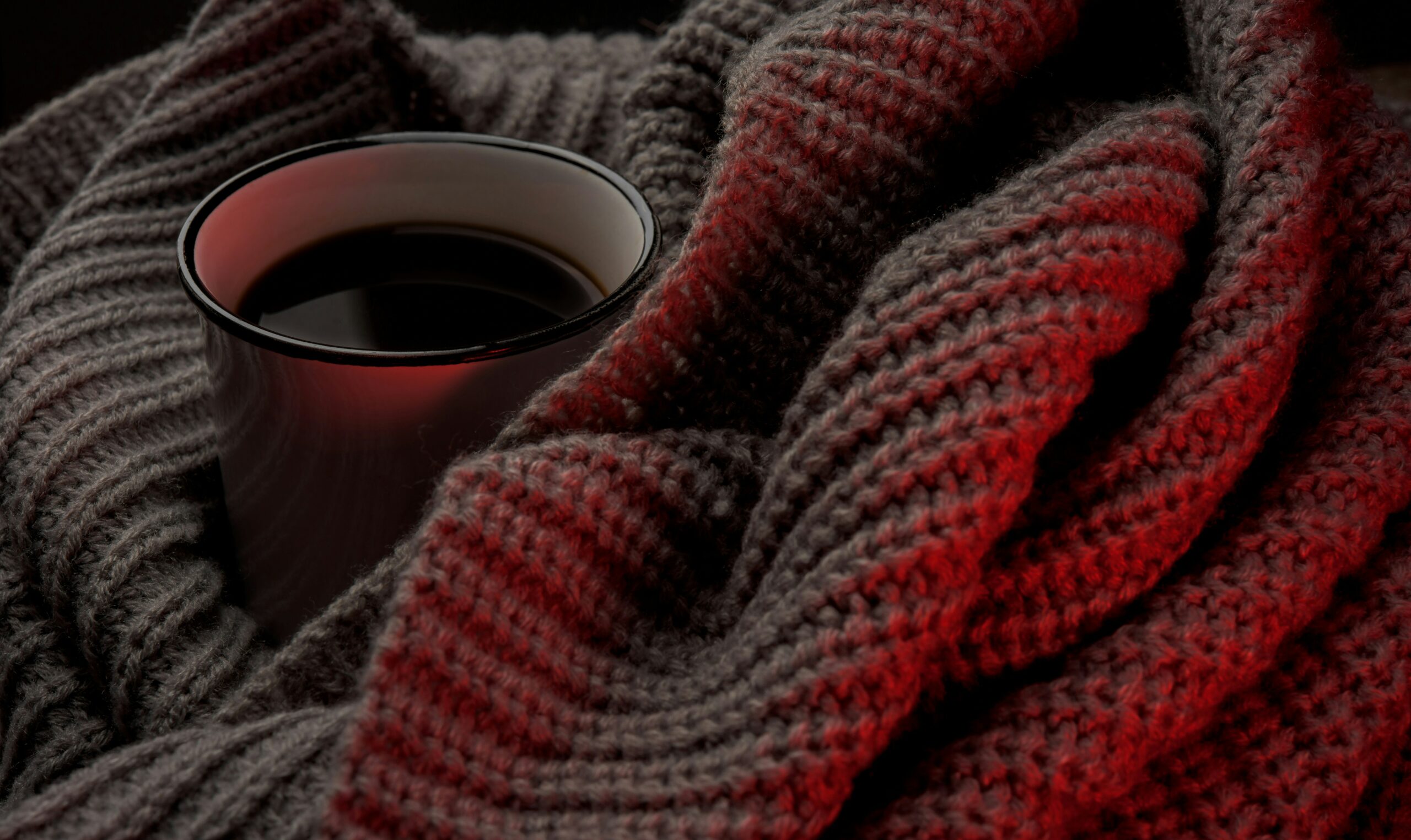
According to American Association of Retired Persons (AARP), those 50 years old and older are seniors! By this definition, as hard as it is to admit, I am well into senior status and as one, I offer holiday health tips for seniors.
Overindulgence during the holidays causes many seniors to make New Year's resolutions related to diet and exercise. But, this year, I propose that seniors incorporate healthy habits during the holiday season, and you may find that your resolutions are not as hard to keep.

EVERY MONDAY – Read Dr. Paul J. Mackarey “Health & Exercise Forum!” via Blog
EVERY SUNDAY in "The Sunday Times" - Read Dr. Paul J. Mackarey “Health & Exercise Forum!” in hard copy
This article is not intended as a substitute for medical treatment. If you have questions related to your medical condition, please contact your family physician. For further inquires related to this topic email: drpmackarey@msn.com
Paul J. Mackarey PT, DHSc, OCS is a Doctor in Health Sciences specializing in orthopedic and sports physical therapy in Scranton and Clarks Summit. Dr. Mackarey is in private practice and is an associate professor of clinical medicine at Geisinger Commonwealth School of Medicine. For all of Dr. Mackarey's articles, visit our exercise forum!

While I normally do not address the topic of shoveling snow until January, considering recent weather events, I thought it might be valuable to present it sooner. Much has been written about the dangers of snow shoveling for your heart. However, while not fatal, low back pain is the most common injury sustained while shoveling snow. Heart attacks are also more common following wet and heavy snow.
Snow shoveling can place excessive stress on the structures of the spine. When overloaded and overstressed, these structures fail to support the spine properly. The lower back is at great risk of injury when bending forward, twisting, lifting a load, and lifting a load with a long lever. When all these factors are combined simultaneously, as in snow shoveling, the lower back is destined to fail. Low back pain from muscle strain or a herniated disc is very common following excessive snow shoveling.
Sources: The Colorado Comprehensive Spine Institute; American Academy of Orthopaedic Surgeons
Visit your doctor regularly and listen to your body.

EVERY MONDAY – Read Dr. Paul J. Mackarey “Health & Exercise Forum!” via Blog
EVERY SUNDAY in "The Sunday Times" - Read Dr. Paul J. Mackarey “Health & Exercise Forum!” in hard copy
This article is not intended as a substitute for medical treatment. If you have questions related to your medical condition, please contact your family physician. For further inquires related to this topic email: drpmackarey@msn.com
Paul J. Mackarey PT, DHSc, OCS is a Doctor in Health Sciences specializing in orthopedic and sports physical therapy in Scranton and Clarks Summit. Dr. Mackarey is in private practice and is an associate professor of clinical medicine at Geisinger Commonwealth School of Medicine. For all of Dr. Mackarey's articles, visit our exercise forum!

November is National Hospice Month! During this time, we celebrate the tireless work of the hospice professionals who assist patients and their families during the weeks and months that they journey with a serious or terminal illness.
However, in addition to the service of providing pain and symptom management, assisting with personal care, providing volunteer, counseling and social work services, there may be many other services that your local hospice program may be able to offer to patients, families and caregivers alike.
Please keep in mind that each hospice agency provides unique services to the community. Before you decide, it is important to reach out and ask which agency offers services that best meet your needs.
Some community support programs that are offered by hospice agencies that are routinely available include:
Bereavement Support ---Dealing with the death of a loved one can be a difficult and often lonely endeavor. All hospice agencies offer bereavement services to families of patients that have died. In addition, many hospices offer community support programming to help those who have suffered a loss. Some support programs are in groups, but often individualized help is available. Most times the bereavement services for the community are without charge.
Pet Bereavement Support---The death of a pet can often be quite traumatizing, especially when the pet has been a long-standing member of the family. Hospice agencies are offering bereavement counseling for those who suffered the loss of a pet. Call and reach out if you have suffered a loss and require support.
Dementia Support Groups--- Nancy Reagan always referred to the diagnosis of President Reagan as the ‘long goodbye’. Dealing with a loved one suffering with dementia is difficult---but you do not have to deal with this alone. Many hospices have dementia support groups that educate, support and guide.
Supporting Children through a Loss---Often it is difficult for children to understand or process the death of a parent, sibling, and grandparent or loved one. There are specialized programs for children to understand and live with the loss----developing a new normal. These programs are usually done in a series of 5 sessions so that proper education and guidance can be accomplished.
Community Education Series--- Not only are your local hospices taking the lead to advance end of life care, but many are helping to educate the professional and lay community alike. Ask about monthly seminars, educational programs and other topics of interest to you and your family/co-workers.
Memorial Services--- Hospice agencies routinely celebrate the lives of those patients who have died within the last 6 months or a year. Surrounding yourself with others who have suffered a loss can often be healing and certainly supportive. Call and ask your local hospice about planned memorial services that honor lives well lived through prayer and testimonials.
Volunteer opportunities---There can be no better way to give back to your community than through volunteering opportunities. Hospice offers a wide array of ways to volunteer ranging from direct patient contact to more administrative tasks. Whatever the job, the act of volunteering is what makes hospice care so special.
Mentoring Programs--- As hospice programs are traditionally interdisciplinary in approach; students working with hospice programs are provided an optimal environment to learn not only hospice care, but also the ever-important concept of team. Many hospice agencies work with students regularly from nursing schools, universities and our local medical college.
Transitions Program--- Often patients are referred for hospice services, but do not meet eligibility requirements for this level of care. However, many hospice agencies offer a transitions program, which is a volunteer supported program to monitor the frail elderly in the community and reporting changes back to the physician for advice and guidance. These programs are free of charge, volunteer supported and a valuable asset for the independent senior who may need that extra set of eyes and ears of a skilled volunteer.
So, in honor of National Hospice Month, we say, thank you to all the hospice professionals, volunteers and families who work so diligently to care for those in our community with a serious or terminal illness. But remember too, that your local hospice agency can be a wonderful resource for education, mentoring, dementia support and grief counseling. Ask questions, attend a seminar, inquire about memorial services or look for support when caring for a loved one with dementia. Help, support, guidance and education are available----just make the call to your local hospice agency.
To find out which hospices serve your community, call NHPCO’s HelpLine at 1-800-658-8898 or visit www.caringinfo.org/findahospice.
Medical Contributor: Ralph DeMario, MD, Former CMO, Hospice of the Sacred Heart

EVERY MONDAY – Read Dr. Paul J. Mackarey “Health & Exercise Forum!” via Blog
EVERY SUNDAY in "The Sunday Times" - Read Dr. Paul J. Mackarey “Health & Exercise Forum!” in hard copy
This article is not intended as a substitute for medical treatment. If you have questions related to your medical condition, please contact your family physician. For further inquires related to this topic email: drpmackarey@msn.com
Paul J. Mackarey PT, DHSc, OCS is a Doctor in Health Sciences specializing in orthopedic and sports physical therapy in Scranton and Clarks Summit. Dr. Mackarey is in private practice and is an associate professor of clinical medicine at Geisinger Commonwealth School of Medicine. For all of Dr. Mackarey's articles, visit our exercise forum!
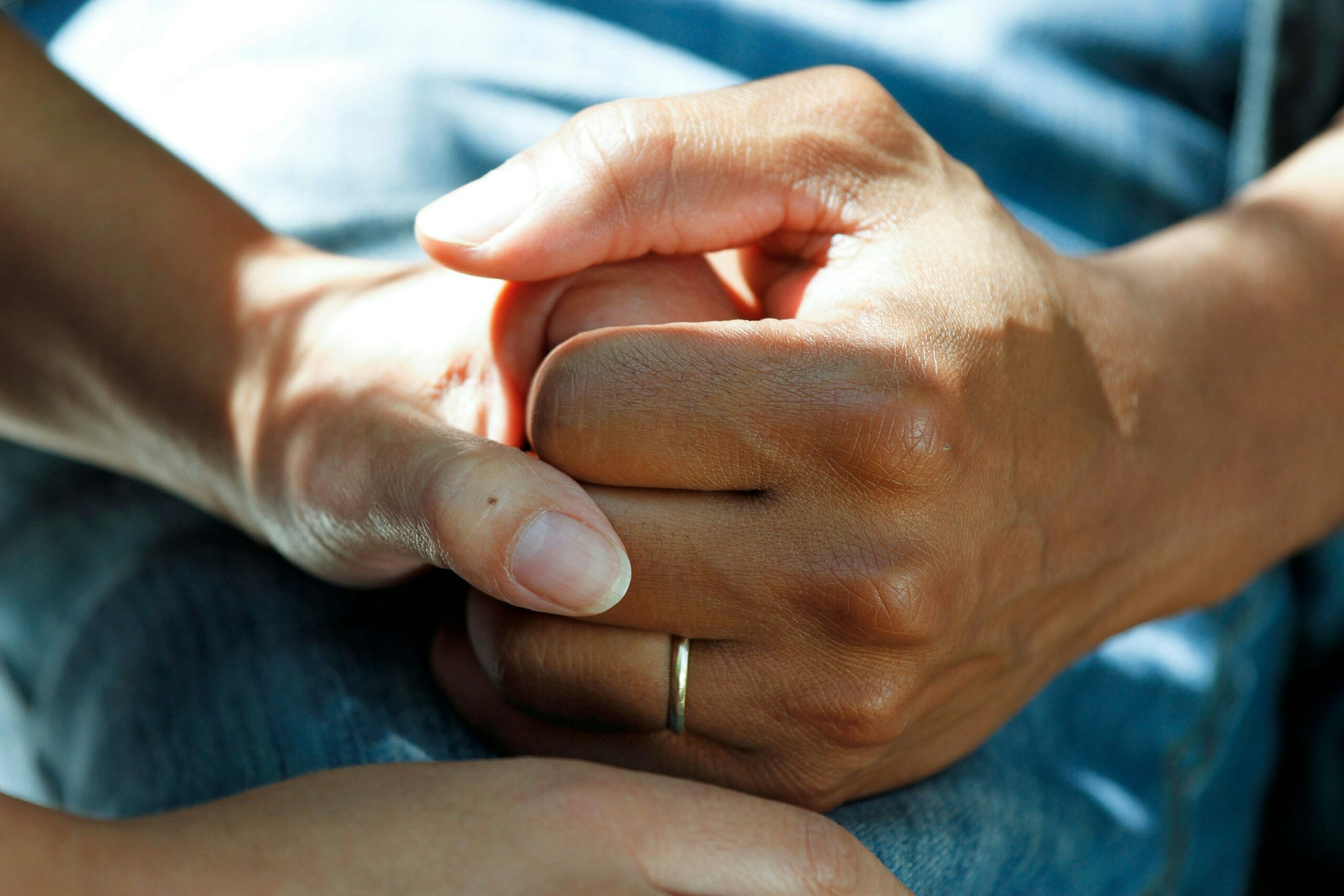
November is National Hospice Month! Each November, the community of hospice and palliative care professionals celebrates National Hospice Month. Although, at first glance, spotlighting the concept of death and dying may seem a bit gloomy. It’s actually the concept of quality of life and the focus on living that is truly being celebrated.
It is true that hospice serves those patients and their families who are on the journey of a serious or terminal illness. But as any hospice professional from the nurse to the social worker to the volunteer to the pastoral counselor will attest------our focus is ALWAYS on the value of life being maintained and the quality of living for each and every one of our patients.
Placing the focal point of hospice care on living, instead of dying, enables the patient and family to focus on:
Remember that your hospice team will make suggestions to improve your pain and symptoms, all with the ultimate goal of allowing you to live your life as fully and functionally as possible. Pain alleviation will allow for improved activities, help with personal care will conserve energy for visiting with family and friends, and allowing a volunteer into your home will give caregivers much needed time for rest and relaxation.
There are a number of myths surrounding hospice care----and this is good a time as ever to help dispel them…
Myth #1--- Hospice is for patients in the last days of their lives.
Actually, hospice care was designed to care for patients and their families for the last 6 months of their lives----the longer patients are under the care of hospice professionals, the better their symptoms are controlled and the better their quality of living.
Myth #2--- Pain medications are given in large doses to sedate the patient and hasten death…..
Pain medications are used in small of doses as required to control pain, and to maintain patients’ alertness, always focusing on living life to the fullest. Medications are never given to hasten death, only to control pain and maintain quality of life.
Myth #3--- Once patients start hospice services, death will come soon….
The statistics on this issue are interesting. In a major study, patients who received hospice care for congestive heart failure actually lived 29 days longer!!! Also, on average 15% of patients are actually discharged from hospice services because of significant improvement in symptoms.
Myth #4--- Patients receiving hospice services cannot leave the home or travel….
The truth is that patients receiving hospice care can drive, travel as able, go to bingo/hairdresser/casino----actually come and go as they are able. So the goal is to improve symptoms so that patients can enjoy their lives as fully as possible while on the journey of a serious illness.
Although the topic of death and dying has been rather taboo in the US, hospice professionals celebrate the living potential that their patients still have. The focus is on quality of relationships, maintaining a functional lifestyle and living the life they were meant to live. Hospice professionals also celebrate the many lives they have improved, all the lives they have touched and the fact that they were chosen to dedicate their professional lives to helping others live more fully……
To find out which hospices serve your community, call NHPCO’s HelpLine at 1-800-658-8898 or visit www.caringinfo.org/findahospice
Medical Contributor: Ralph DeMario, MD, Former CMO, Hospice of the Sacred Heart

EVERY MONDAY – Read Dr. Paul J. Mackarey “Health & Exercise Forum!” via Blog
EVERY SUNDAY in "The Sunday Times" - Read Dr. Paul J. Mackarey “Health & Exercise Forum!” in hard copy
This article is not intended as a substitute for medical treatment. If you have questions related to your medical condition, please contact your family physician. For further inquires related to this topic email: drpmackarey@msn.comPaul J. Mackarey PT, DHSc, OCS is a Doctor in Health Sciences specializing in orthopedic and sports physical therapy in Scranton and Clarks Summit. Dr. Mackarey is in private practice and is an associate professor of clinical medicine at Geisinger Commonwealth School of Medicine. For all of Dr. Mackarey's articles, visit our exercise forum!
